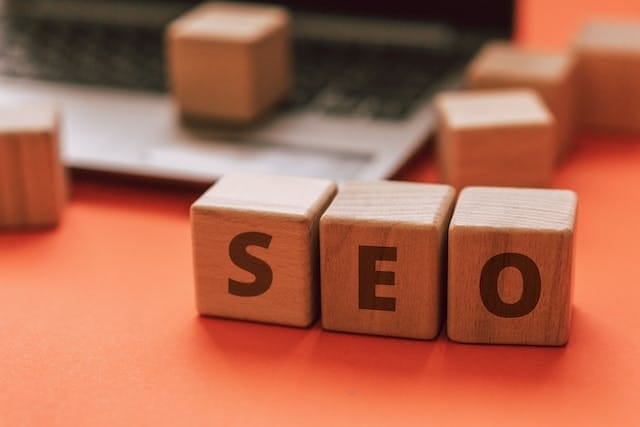
What is On-Site SEO? A Clear Explanation
On-site SEO is an essential part of any websites search engine optimisation strategy. It refers to the process of optimising individual web pages in order to rank higher and earn more relevant traffic from search engines. On-site SEO involves optimising both the content and HTML source code of a page, as well as its structure and organisation.
At its core, on-site SEO is about making it as easy as possible for search engines to understand what your website is about, and what each individual page on your site is trying to communicate. This involves using relevant keywords and phrases throughout your content and meta data, as well as ensuring that your site’s structure and navigation are intuitive and easy to follow.
When done correctly, on-site SEO can have a significant impact on your website’s search engine rankings, making it easier for potential customers to find your business online. By optimising your site’s content and structure, you can improve your visibility in search engine results pages and attract more targeted traffic to your website. On-site SEO should be used in tandem alongside your website off-site SEO strategy. For positive SEO performance, you need to use both on-site and off-site SEO techniques as part of your digital marketing strategy.
The Fundamentals of On-Site SEO
On-Site SEO refers to the practice of optimising web pages to improve their ranking on search engines. It involves optimising various elements on a webpage such as title tags, meta descriptions, headers, URLs, and content to make them more relevant to users and search engines. In this section, we will explore the basics of On-Site SEO, its importance, and core components.
Understanding On-Site SEO
On-Site SEO is a relevant ranking factor that affects the traffic and ranking of a website. It is an essential part of SEO services that involves optimising the content and structure of a webpage to make it more search engine friendly. On-Site SEO is different from Off-Page SEO, which involves external links and other factors that are not directly related to the webpage.
The Importance of On-Site SEO
On-Site SEO is crucial for ranking on search engines and driving traffic to a website. By optimising the content and structure of a webpage, we can improve its relevance to users and search engines. This, in turn, increases the chances of the webpage ranking higher on search engine results pages (SERPs).
On-Site SEO vs Off-Page SEO
On-Site SEO and Off-Page SEO are two different aspects of SEO that work together to improve the ranking of a webpage. On-Site SEO involves optimising the content and structure of a webpage, while Off-Page SEO involves external factors such as backlinks, social media, and other factors that are not directly related to the webpage.
Core Components of On-Site SEO
The core components of On-Site SEO include optimising the title tags, meta descriptions, headers, URLs, and content of a webpage. These components help search engines understand the content and relevance of a webpage and improve its ranking on SERPs.
The Role of E-A-T in On-Site SEO
E-A-T stands for Expertise, Authoritativeness, and Trustworthiness. It is a critical factor in On-Site SEO that helps search engines determine the quality and relevance of a webpage. By creating high-quality content and demonstrating expertise, authoritativeness, and trustworthiness, we can improve the ranking of a webpage on SERPs.
On-Site SEO Checklist
An On-Site SEO checklist is a list of optimisations that we can make to a webpage to improve its ranking on search engines. Some essential optimisations include optimising title tags, meta descriptions, headers, URLs, and content, among others.
The Evolution of On-Site SEO
On-Site SEO has evolved over the years, with search engines becoming more sophisticated in their algorithms. Today, On-Site SEO involves creating high-quality content that is relevant to users and search engines and optimising various elements on a webpage to improve its ranking on SERPs.
Common On-Site SEO Myths
There are several misconceptions about On-Site SEO, such as keyword stuffing, duplicate content, and other practices that do not improve the ranking of a webpage. It is essential to avoid these practices and focus on creating high-quality content and optimising various elements on a webpage to improve its ranking on SERPs.
Check out the video below from Hubspot which talks through the basics of on-site SEO in a 7-minute video.
Keyword Optimisation
Keyword optimisation is one of the most important on-site SEO techniques. It involves researching and selecting relevant keywords and then incorporating them into your website’s content, titles, and headers. Keyword optimisation helps search engines understand what your website is about and rank it accordingly.
Keyword Research Fundamentals
Keyword research is the foundation of keyword optimisation. It involves identifying the search queries that your target audience is using to find your products or services. By identifying the right keywords, you can optimise your website’s content to match the search intent of your target audience.
Incorporating Keywords into Content
Once you have identified your target keywords, it’s important to incorporate them into your website’s content. However, it’s important to do this in a way that is readable and user-friendly. Keyword stuffing, or overusing keywords in an attempt to manipulate search engine rankings, can result in penalties and a poor user experience.
Avoiding Keyword Stuffing
Keyword stuffing is a black hat SEO technique that involves overusing keywords in an attempt to manipulate search engine rankings. This can result in penalties and a poor user experience. Instead, focus on creating high-quality, user-friendly content that incorporates your target keywords in a natural and readable way.
Keyword Optimisation for Titles and Headers
In addition to incorporating keywords into your website’s content, it’s important to optimise your titles and headers. Your page titles should include your target keywords and accurately reflect the content of your page. Similarly, your headers (such as H1, H2, and H3) should include your target keywords and provide a clear and concise summary of your page content.
In summary, keyword optimisation is a crucial on-site SEO technique that involves researching and selecting relevant keywords and incorporating them into your website’s content, titles, and headers. By doing this in a readable and user-friendly way, you can improve your website’s rankings, search query relevance, and user experience.
Technical Aspects of On-Site SEO
When it comes to on-site SEO, there are several technical aspects that need to be considered. In this section, we will discuss the most important technical aspects of on-site SEO to help you optimise your web pages for search engines.
HTML and Site Structure
HTML plays a crucial role in on-site SEO. Search engines crawl web pages to understand the content and structure of a website. To make it easier for search engines to crawl your website, you need to ensure that your HTML is clean and well-structured. This means using proper header tags, meta tags, and other HTML elements to organize your content.
Optimising Page Speed
Page speed is an important factor in on-site SEO. Search engines favour websites that load quickly because they provide a better user experience. To optimise your website page speed, you need to ensure that your website is optimised for images, uses a content delivery network (CDN), and minifies your code. Such as Cloudflare for example.
Mobile Optimisation
Mobile devices are becoming increasingly popular, and search engines are placing more emphasis on mobile-friendly websites. To ensure that your website is mobile-friendly, you need to use responsive design, optimise your images, and make sure your website is easy to navigate on a mobile device.
URL Structure and Navigation
URL structure and navigation are important for on-site SEO. Search engines use URLs to understand the structure of a website and how the pages are connected. To optimise your URL structure and navigation, you need to use SEO-friendly URLs, create a logical hierarchy for your pages, and use internal linking to connect your pages.
Internal Linking Strategies
Internal linking is an important aspect of on-site SEO. Internal links help search engines understand the structure of your website and how your pages are connected. To optimise your internal linking strategy, you need to use descriptive anchor text, link to relevant pages, and create a logical hierarchy for your pages. Depending on the anchor text, this can be a create strategy to improve your local SEO performance.
Indexing and Crawlability
Indexing and crawlability are important for on-site SEO. Search engines use crawlers to index your website and understand the content of your pages. To ensure that your website is easy to crawl and index, you need to use a sitemap, robots.txt file, and ensure that your website is free of errors.
Addressing Duplicate Content
Duplicate content can harm your on-site SEO. Search engines penalize websites that have duplicate content because it provides a poor user experience. To address duplicate content, you need to ensure that your content is unique, use canonical tags, and avoid using duplicate content on your website as best possible. Perhaps before you start to edit the content, pause and think about creating a clear SEO content strategy plan. This document can aid greatly with ensuring your content is placed in the right place on your website.
Technical SEO Audits
Performing a technical SEO audit is an important aspect of on-site SEO. A technical SEO audit helps you identify any technical issues that may be harming your website’s SEO performance. Tools like SEMrush and Ahrefs can help you perform a technical SEO audit and identify areas for improvement.
In summary, on-site SEO is a crucial aspect of optimising your web pages for search engines. By following these technical aspects of on-site SEO, you can ensure that your website is optimised for search engines and provides a great user experience for your visitors.
Content Optimisation
Creating high-quality content is one of the most important aspects of on-site SEO. Our goal is to provide website users with in-depth, helpful, and user-friendly content that meets their needs and aligns with their search intent. High-quality content is an essential component of content marketing, which can help to drive traffic, increase engagement, and improve search engine rankings.
Optimising for user experience is another crucial element of content optimisation. We want to ensure that our content is readable, user-friendly, and easy to navigate. Utilising images and multimedia can help to break up text and make our content more engaging. Image optimisation is an important consideration, as images can impact page load times and overall user experience. We may also want to consider incorporating rich snippets and structured data to enhance our content and make it more visible in search results.
Incorporating structured data is another important aspect of content optimisation. Structured data, also known as schema, can help search engines better understand the content of our website and provide more relevant results to users. Featured snippets are another way to improve visibility in search results and provide users with quick, concise answers to their queries.

Writing effective meta descriptions is also a critical component of content optimisation. Meta descriptions appear in search engine results pages (SERPs) and can impact click-through rates. We want to ensure that our meta descriptions are concise, informative, and compelling, encouraging users to click through to our website.
Optimising headers and sub headers is another key consideration. Header tags, such as H1 tags, help to structure our content and make it easier to read and navigate. We want to ensure that our headers and sub headers are relevant, descriptive, and accurately reflect the content of our website.
Overall, content optimisation is a critical aspect of on-site SEO. By creating high-quality, user-friendly content that meets the needs of our target audience, we can improve search engine rankings, drive traffic, and increase engagement on our website. As part of SEO services we offer our clients. Included in your SEO prices paid, will generally be content optimisation. This is inside your website platform like WordPress, Shopify or Magento for example.
Engagement and User Signals
When it comes to on-site SEO, engagement and user signals are crucial factors to consider. Understanding how users engage with your website can help improve your search engine rankings and drive more traffic to your site. In this section, we will explore the importance of user engagement and how to improve it.
Understanding User Engagement
User engagement refers to how users interact with your website. This includes factors such as dwell time, bounce rate, and user experience. Dwell time refers to the amount of time users spend on your site, while bounce rate refers to the percentage of users who leave your site after viewing only one page. User experience encompasses a variety of factors, such as site speed, navigation, and content quality. Website speed is so important for SEO. If you are not sure where to start here, read our guide to understand how to improve your website speed or contact our team for help.
Improving user engagement can have a positive impact on your search engine rankings. Search engines like Google use engagement metrics to determine the relevance and quality of a website. Websites with high engagement metrics are more likely to rank higher in search engine results pages (SERPs).
Improving Click-Through Rates
Click-through rate (CTR) is another important engagement metric. CTR refers to the percentage of users who click on your website after seeing it in search engine results pages (SERPs). Improving your CTR can help improve your search engine rankings and drive more traffic to your site.
One way to improve your CTR is to optimise your meta descriptions and titles. Meta descriptions and titles are the snippets that appear in search engine results pages (SERPs). They provide users with a brief summary of what your page is about. By optimising your meta descriptions and titles, you can make your pages more appealing to users, which can lead to higher CTRs.
Social Signals and SEO
Social media can also play a role in user engagement and SEO. Social signals, such as likes, shares, and comments, can help improve your search engine rankings. This is because social signals indicate that your content is valuable and relevant to users.
To improve your social signals, it’s important to create high-quality content that is shareable and engaging. You should also make it easy for users to share your content by including social sharing buttons on your site. A clear social media marketing strategy is critical.
In conclusion, user engagement and signals are important factors to consider when it comes to on-site SEO. By understanding how users engage with your site and taking steps to improve engagement metrics, you can improve your search engine rankings and drive more traffic to your site.
Link Management
When it comes to on-site SEO, link management plays a crucial role in determining the website’s ranking on search engines. Links are one of the most important ranking factors, and search engines use them to determine the website’s authority and relevance.
Internal vs External Links
Internal links are links that connect different pages within the same website, while external links connect pages on different websites. Internal links help search engines understand the website’s structure and hierarchy, while external links indicate the website’s relevance and authority.
Anchor Text Optimisation
Anchor text is the clickable text that appears as a hyperlink. Optimising anchor text involves using relevant keywords and phrases that accurately describe the linked page’s content. This helps search engines understand the linked page’s relevance and improves the website’s ranking for those keywords.
Managing Outbound Links
Outbound links are links that point from the website to other websites. It is important to ensure that outbound links are trustworthy and relevant to the website’s content. Linking to low-quality or irrelevant websites can harm the website’s trustworthiness and negatively impact its ranking.
The Impact of Backlinks on On-Site SEO
Backlinks are external links that point to the website. Backlinks from trustworthy and authoritative websites can significantly improve the website’s ranking on search engines. On the other hand, backlinks from low-quality or spammy websites can harm the website’s ranking and trustworthiness.
In conclusion, link management is an essential aspect of on-site SEO. Properly managing internal and external links, optimising anchor text, and ensuring outbound links are trustworthy can significantly improve the website’s ranking and trustworthiness. Additionally, obtaining high-quality backlinks from authoritative websites can have a significant impact on the website’s ranking on search engines.
Monitoring and Maintenance
At this stage, we have implemented all the necessary on-site optimisations to improve our website search engine ranking. However, our job is not done yet. We need to monitor and maintain our on-site SEO to ensure that our website continues to rank high on search engine results pages (SERP). In this section, we will discuss the key aspects of monitoring and maintaining on-site SEO.
Tracking On-Site SEO Performance
To monitor our website’s on-site SEO performance, we need to track various metrics such as traffic, organic traffic, and ranking. We can use tools like Google Analytics and Google Search Console to track these metrics. By regularly monitoring these metrics, we can identify any issues that may be affecting our website’s ranking and take corrective measures.
Regular Content Updates
Freshness and relevance of content are crucial on-page factors that can impact our website’s ranking. Therefore, it is essential to regularly update our website’s content to keep it fresh and relevant. We can achieve this by publishing blog posts, updating product descriptions, and adding new pages to our website. By doing so, we can signal to Google that our website is active and relevant, which can improve our ranking.
Responding to Algorithm Updates
Google’s search algorithm is continually evolving, and we need to keep up with the changes to maintain our website’s ranking. Whenever Google releases an algorithm update, we need to analyse how it affects our website’s ranking and take corrective measures if necessary. For example, if an algorithm update targets low-quality content, we need to review our website’s content and remove any low-quality pages.
FAQs and On-Site SEO
Including a FAQ section on our website can be helpful for both users and search engines. Users can quickly find answers to their questions, while search engines can understand the website’s content better. To optimise our Primal Space FAQ section for on-site SEO, we need to ensure that the questions and answers are relevant and helpful. We can also use structured data markup to help search engines understand our FAQ section better.
In conclusion, monitoring and maintaining our on-site SEO is crucial to ensure that our website continues to rank high on SERP. By tracking our website’s performance, regularly updating our content, responding to algorithm updates, and optimising our FAQ section, we can improve our websites ranking and drive more organic traffic.
Conclusion
In conclusion, we have explored the various aspects of On-Site SEO and its importance in optimising web pages for search engines. We have seen how On-Site SEO is the practice of optimising web pages to rank higher and earn more traffic in search engines, and how it involves optimising both the content and HTML source code of a page.
We have learned that On-Site SEO includes various elements such as optimising title tags, meta descriptions, header tags, internal linking, and keyword placement. These elements help search engines to understand the content of a page and to rank it accordingly.
We have also seen how On-Site SEO is an essential part of the larger practice of SEO, which involves optimising both On-Site and Off-Site factors to improve the visibility of a website in search engines. While Off-Site SEO involves building links and social signals to a website, On-Site SEO focuses on optimising the content and structure of a website to make it more search engine friendly.
Finally, we have highlighted the importance of On-Site SEO in the context of search engine optimisation, and how it can help businesses to improve their online visibility and attract more organic traffic to their websites. By implementing On-Site SEO best practices, businesses can ensure that their websites are optimised for search engines and are more likely to rank higher in search engine results pages (SERPs).
Our agency Primal Space has it’s team based predominantly in Scotland. We offer SEO services in Edinburgh for organisations that need help with their website digital marketing strategy. Our services are not restricted to Edinburgh only though. We value the remote working concept and help clients throughout the whole of the UK with a range of website and marketing services.


